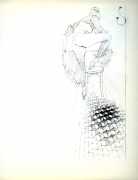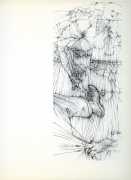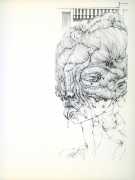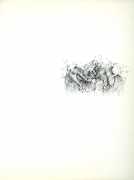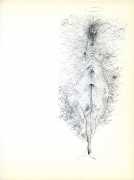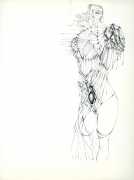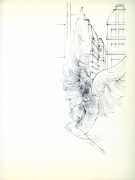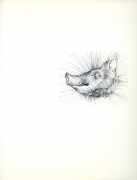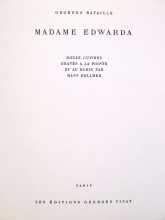 Thirteen years after writing his transgressive novel L’histoire de l’oeil (The Story of the Eye), Georges Bataille again turned to fiction as a channel for exploring the links between sex, death and religion. Madame Edwarda is a novella, really little more than a short story, in which the first-person author, seeking release and understanding of his physical urges, visits a brothel, from where the eponymous Madame takes him on a whirlwind tour of the dark erotic offerings of night-time Paris. Mystery, passion, fear, religious ecstasy – and a threesome with a taxi driver – make for an exciting and life-changing night out.
Thirteen years after writing his transgressive novel L’histoire de l’oeil (The Story of the Eye), Georges Bataille again turned to fiction as a channel for exploring the links between sex, death and religion. Madame Edwarda is a novella, really little more than a short story, in which the first-person author, seeking release and understanding of his physical urges, visits a brothel, from where the eponymous Madame takes him on a whirlwind tour of the dark erotic offerings of night-time Paris. Mystery, passion, fear, religious ecstasy – and a threesome with a taxi driver – make for an exciting and life-changing night out.
Madame Edwarda was written in September 1941, during the darkest days of the Nazi occupation of Paris, Bataille using the pseudonym Pierre Angelique. The fourth edition, published by Jean-Jacques Pauvert’s Edition Georges Visat four years after Bataille’s death, was accompanied by engravings made by Hans Bellmer, who thirteen years after illustrating L’histoire de l’oeil again powerfully captured Bataille’s dreamlike narrative.
 It is possible to see in the character of Madame Edwarda a composite of several important women in Bataille’s life – Violette, a young prostitute with whom he had fallen in love in 1931 and whose release from her brothel he had tried in vain to secure; Laure (Colette Peignot), his lover and erotic muse until her death in 1938; Angela da Foligno, a thirteenth-century Italian mystic whose ecstatic accounts of religiosity informed much of Bataille’s writing; and Madeleine, an inpatient at the Salpétrière mental hospital whose ecstatic states formed the basis of Bataille’s psychiatrist friend Pierre Janet’s study.
It is possible to see in the character of Madame Edwarda a composite of several important women in Bataille’s life – Violette, a young prostitute with whom he had fallen in love in 1931 and whose release from her brothel he had tried in vain to secure; Laure (Colette Peignot), his lover and erotic muse until her death in 1938; Angela da Foligno, a thirteenth-century Italian mystic whose ecstatic accounts of religiosity informed much of Bataille’s writing; and Madeleine, an inpatient at the Salpétrière mental hospital whose ecstatic states formed the basis of Bataille’s psychiatrist friend Pierre Janet’s study.
The Bellmer-illustrated edition of Madame Edwarda was published by Les Editions Georges Visat in a limited numbered edition of 167 copies.


